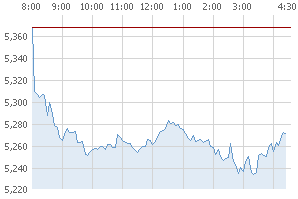As the last few weeks have shown, the markets can be a fickle entity. On one hand ignoring, and then over-reacting to the same information – Greek debt crisis, high unemployment, housing slumps – it can be a challenge to know how to invest in a market so volatile.

The FTSE Fell 108.85 Monday On Greek Debt Concerns
Markets in Europe and the US fell Monday on a seemingly endless onslaught of bad news concerning an eminent Greek default, a drop in US homebuilder sentiment, and a call for the increase in taxes for wealthy Americans by United States President Barack Obama.
With so much uncertainty it can be tempting to stay out of the market all together, rather than risk losing everything in an unpredictable market. The secret to success lies not necessarily where you invest, but how you invest.
There are several key issues to keep in mind when deciding how to invest your hard earned capital, as well as many ways to protect yourself from the inevitable ups and downs of the stock market. For many people, there are a few simple steps that can be taken to mitigate risk, and build lasting wealth.
While there is no way to completely eliminate risk when investing in equities, by developing and utilizing a trading plan based on your individual investment goals, you can realize gains in a variety of market conditions.
How To Invest For Your Personality
A major issue to consider when learning how to invest is your unique personality and risk-tolerance. Your ability to tolerate risk will be one of the single greatest issues you as an investor will have to take into account when developing a trading plan.
Many people associate this with your aversion to risk, but it is important to keep in mind the desire you may feel for excitement in your trading strategy. If you crave more excitement than your buy-and-hold investment strategy calls for, you may be setting yourself up for failure as you grow bored and deviate from your plan. Sudden, emotion fueled trading will almost always end in financial loss.
If you are a buy-and-hold investor looking for steady income in your portfolio, dividend paying stocks and dividend paying ETFs such as SDY have been an excellent pay-to-wait strategy, as it combines income with growth, and a greater potential for realized gains.
The approach you take when learning how to invest will be based on what you as an investor feel the most comfortable with, and what will ultimately allow you to sleep at night. For many investors, an age-appropriate mix of stocks and bonds, combined with dividend reinvestment and dollar-cost averaging is the best strategy to ride out volatility.
How To Invest For Value Amidst A Panic
One of the first things a new investor learns when researching how to invest in the stock market is to buy low and sell high. Seems so simple, huh? Well, while it may seem easy enough, it can be difficult to overcome fear and emotion and buy stocks or increase your positions when it seems like everyone else is fleeing the market.
The key to successfully learning how to invest in the market for value is to dig deeper than the headlines to find companies and sectors that may have been the victim of an indiscriminate market sell-off. Where there is panic there is opportunity if you are willing to be patient and look through the wreckage for a hidden gem.
It would be wise to look to the European markets for these types of deals, as the Eurozone has been a hot-bed of activity and market volatility. While value investors have history on their side, it is important to keep in mind that your should never buy a stock simply because it is cheep. Look for companies and sectors that have strong fundamentals, and the potential for future upside.
With no solution to the Greek debt problem in site, and the ever-present threat of default, there is a considerable amount of volatility in store for investors in the immediate future.
While volatility in the market may be inevitable, losses do not have to be. Look to dips in the market for buying opportunities, and utilize a buy-and-hold strategy for your best chance at realizing lasting gains no matter what the market is doing.
Comments (No)